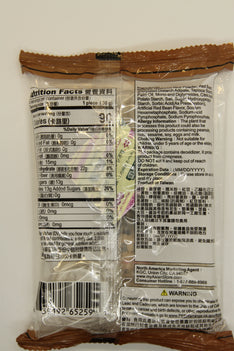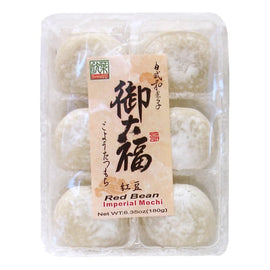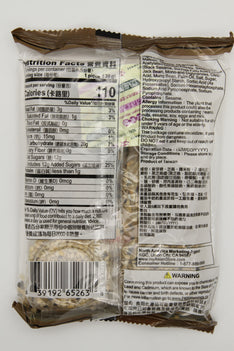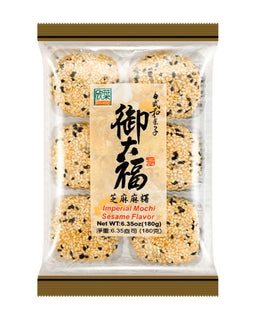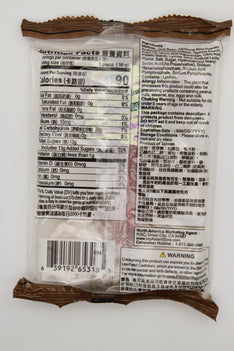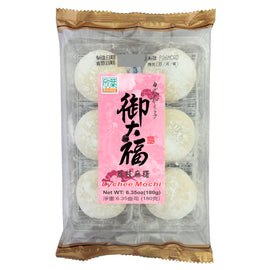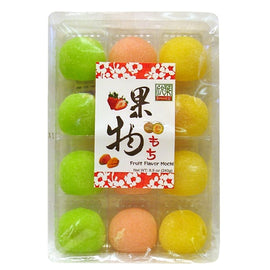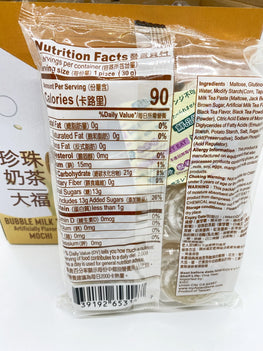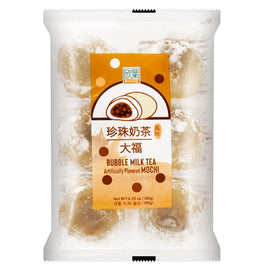Product successfully added to your shopping cart

Mochi
More Than Just a Sweet Treat: Unwrapping the Asian Love Affair with Mochi
If you’ve strolled through the freezer aisle of your local grocery store lately, you’ve likely seen them: little, dusted squares of ice cream wrapped in a soft, chewy dough. This is mochi ice cream, America’s most popular gateway to the vast and wonderful world of mochi. But for many in the US, this delicious introduction is just the tip of the iceberg.
To understand why mochi holds such a cherished place in the hearts of so many across Asia, we need to look beyond its trendy, Instagram-worthy facade and dive into its deep cultural roots, unique texture, and timeless versatility.
First Things First: What Exactly Is Mochi?
At its simplest, mochi is a Japanese rice cake made from mochigome, a special type of short-grain glutinous rice. The rice is steamed and then pounded—traditionally with heavy wooden mallets in a ceremonial fashion—until it becomes an incredibly smooth, stretchy, and chewy dough.
Think of it less like a cake you’d find at a birthday party and more like a uniquely textured edible canvas. Its flavor is subtly sweet and comforting, but its true magic lies in its consistency: a delightful, springy chew that is unlike anything in the Western culinary repertoire. It’s a mix of a fresh marshmallow, gummy candy, and soft dough, but it stands in a category all its own.
The Heart of the Matter: Mochi as Culture and Tradition
For many Asian cultures, particularly in Japan, mochi is far more than a snack. It’s a symbol of tradition, community, and good fortune.
-
A Centerpiece for the New Year: The most significant association is with the Japanese New Year. The preparation of kagami mochi (a decorative stack of two mochi rounds with a bitter orange on top) is a ritual to welcome the New Year’s deity. Families also eat ozoni, a savory soup with mochi, to bring luck, health, and longevity for the year ahead. This isn't just eating; it's participating in a centuries-old tradition.
-
A Symbol of Togetherness: The traditional method of making mochi, called mochitsuki, is a social event. One person pounds the hot rice with a large mallet while another quickly turns and wets the dough between strikes. This requires rhythm, trust, and teamwork, turning food preparation into a powerful act of community and family bonding.
The Allure of the "Chew"
Let’s talk about texture, or what the Japanese call mochi-mochi shita. For those who grew up with it, the unique chew of mochi is a huge part of its appeal. It’s a satisfying, tactile experience that makes eating feel active and engaging. It’s a comfort texture, the same way some people find comfort in the creaminess of mashed potatoes or the crunch of a good potato chip.
A Delicious Chameleon: Mochi’s Incredible Versatility
Perhaps the biggest reason for mochi’s enduring love is its incredible versatility. It can be sweet, savory, grilled, boiled, or fried.
-
The Classics: Enjoy it simply, dusted with sweet soybean or kinako flour (kinako mochi). Or try it wrapped in a salted cherry leaf (sakura mochi) during springtime.
-
The Modern & Sweet: Today, mochi is filled with sweet red bean paste (daifuku), stuffed with whole strawberries (ichigo daifuku), or, as you know, enveloping a ball of premium ice cream.
-
The Savory Side: Don’t forget the savory applications! It can be added to soups, grilled and dipped in soy sauce and nori (yaki mochi), or even used as a chewy, gluten-free base for pizzas and other inventive dishes.
Mochi’s Journey to the Mainstream
So, how did this ancient food become a staple in American supermarkets? The journey began with the popularity of Japanese restaurants and anime, creating curiosity. But the real game-changer was mochi ice cream. By combining a familiar favorite (ice cream) with an exciting new texture, it provided a low-risk, high-reward entry point for American palates. Its success opened the door for other mochi products, from pre-made dough to flavored snacks.
A Taste of Comfort and Home
Ultimately, the love for mochi is a layered one. For many in the Asian diaspora, a bite of mochi can be a powerful taste of home, family, and celebration. It’s a food that connects them to their heritage. For new fans in the US, it’s a discovery of a new sensory experience—a delicious, chewy, and endlessly adaptable food that offers a delightful break from the ordinary.
So the next time you pick up a piece of mochi, take a moment before you take a bite. Appreciate its smooth, soft exterior. Know that you’re holding something that represents centuries of tradition, community, and culinary artistry. It’s not just a dessert; it’s a little piece of culture, ready to be enjoyed.
Want to Try Mochi Yourself? Here’s a Quick Guide:
-
Start Simple: Pick up some mochi ice cream or pre-packaged daifuku (the ones filled with red bean paste) from an Asian market.
-
Safety First: Always chew mochi carefully and thoroughly, especially for children and the elderly, as its sticky texture can be a choking hazard if swallowed whole.
-
Get Adventurous: Visit a Japanese bakery or restaurant and try a savory dish with grilled mochi (yaki mochi). You might just discover a new favorite

